Computational Chemistry
Plenary Speaker Axel D. BeckeDepartment of Chemistry, Dalhousie University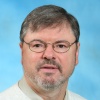 Dr. Becke is the Killam Chair in Computational Science at Dalhousie University. He is an international leader in the development of novel quantum molecular theories and computational methods, and one of the most cited physical scientists in the world. He has received numerous awards; most recently the Theoretical Chemistry Award of the American Chemical Society. A Density-Functional Theory for Covalent and Noncovalent Chemistry Density-Functional Theory is an approach to computing the structures and properties of atoms, molecules, and solids that has, over the last three decades, become the most popular tool in computational physics and chemistry. Advances by Dr. Becke’s lab in the theory and its implementation are largely responsible for this popularity. Dr. Becke’s talk will outline the salient developments, and the role of computational resources in their success. |
Andre Bandrauk
Département de chimie, Université de Sherbrooke
High Performance Supercomputer Simulations of Nonperturbative Laser-Molecule Interactions. Modern laser technology allows for the generation of ultrashort laser pulses with intensities exceeding the internal electric field in atoms and molecules. The interaction of such pulses with atoms and molecules leads to new highly nonlinear, non-perturbative regimes of laser-matter interaction requiring high level simulations based on large-dimensional spatio-temporal partial differential equations. The main spin-off of research in this new field, mainly theoretical, has been the design of new ultrashort pulses, the attosecond pulse, for the ultimate visualization and control of the “quantum” nature of the electron in molecules.
Alex Brown
Department of Chemistry, University of Alberta
Computations on Small to Large Molecules. A variety of computational techniques for determining geometries, bonding (electronic structure), and physical as well as photophysical properties of molecules is critical to interpreting and predicting modern experimental measurements and syntheses in chemistry. In this talk, Professor Brown will highlight his computations on small to large molecules to help understand chemical problems.
James Gauld
Department of Chemistry & Biochemistry, University of Windsor
High Fidelity Substrate-Assisted Catalysis in Aminoacyl-tRNA Synthetases. Aminoacyl-tRNA Synthetase (aaRS) enzymes are ubiquitous essential enzymes, having a central role in many physiological processes, in particular protein synthesis. Despite the fact that they are thought to be very ancient, they have been observed to have an outstandingly high fidelity. How this is achieved, however, is poorly understood.
Erin Johnson
School of Natural Sciences, University of California, Merced
A DFT-Based Approach to Modeling Dispersion Interactions. Density-Functional Theory (DFT) methods have attained widespread use in chemical and materials physics research due to their accuracy and efficiency. This talk will present a DFT-based approach to modeling dispersion interactions and survey a range of applications, including surface adsorption, chiral crystals, thermal contraction in polymers, and friction of graphene.
Jing Kong
Department of Chemistry, Middle Tennessee State University
High Performance Computation of Density Functional Theory. Modelling of molecules with density functional theory (DFT) is a major application area in high performance computing. In this talk, Dr. Kong will demonstrate how ten-times speed-up can be achieved for DFT calculations without incurring errors through developing new algorithms.
Nelaine Mora Diez
Department of Chemistry, Thompson Rivers University
Deuterium Isotope Effects on Acid-Base Equilibria at Ambient and Hydrothermal Conditions. Heavy water is used as a neutron moderator and coolant in CANDU reactors. Due to the presence of acidic species in the medium and the isotopic nature that alters the acidic character of these species by deuterium isotope exchange, the pipes that carry heavy water are prone to corrosion. While this corrosion can be minimized by applying chemical treatments that neutralize the medium, current operating procedures rely on data generated from light water under hydrothermal conditions since very little data is available in heavy water. Our research involves the computational determination of the pKa values of 73 weak organic and inorganic acids in both H2O and D2O at ambient and hydrothermal conditions using DFT and continuum solvation methods. The calculated difference of pKa between D2O and H2O at ambient conditions for the studied acids is in very good agreement with experimental values, which provides confidence in the calculated pKa difference at hydrothermal conditions. In addition, both pKa differences follow a very interesting pattern depending on temperature and pressure which is further investigated.
Jason Pearson
Department of Chemistry, University of Prince Edward Island
Chemical Data Open Storage System with Search Tools. HPC is an indispensable tool in the chemical sciences, among many other research fields. However, only pieces of the enormous amounts of valuable data generated are preserved through publication. Dr. Pearson is leading a joint undertaking with data specialists in the UPEI library and computational chemists at UPEI and MUN, to develop an open model system for storing and performing sophisticated searches of vast amounts of computational chemical data.
Christopher Rowley
Department of Chemistry, Memorial University
Modelling Biophysical Chemistry with High Performance Computing. Living things are comprised of a vast set of cellular components like proteins and membranes. The molecular level interaction of these components ultimately leads to the behaviour of these systems, however these interactions are so complex, computer simulations are needed to understand them. Professor Rowley’s group uses massively-parallel molecular dynamics study how molecules cross cell membranes, how proteins fold into their functional state, and how drugs react with their targets.
Dennis Salahub
Department of Chemistry, University of Calgary
Multiscale Modeling of Chemical Reactions in Complex Environments. Dr. Salahub will describe recent advances in modeling enzymatic catalysis, electron transfer between proteins and/or heavy oil upgrading, focusing on how several techniques, from quantum chemistry, to molecular dynamics, to stochastic network analysis, have to be brought to bear on the problem and on issues of HPC parallel processing.
Stacey Wetmore
Department of Chemistry & Biochemistry, University of Lethbridge
It was the Best of Times, It was the Worst of Times: A Day in the Life of your DNA. Despite containing all information necessary for life, our DNA can become damaged by exposure to external sources (X-rays, UV sunlight) or by natural processes (errors when DNA is copied). Since DNA repair has been correlated with the prevention of life-threatening illnesses, research in Professor Wetmore’s laboratory uses computer calculations to understand both how DNA is damaged and how this damage is repaired in our bodies.
And contributed talks from
Eric Bushnell, Dalhousie University
A computational study of the similarities and differences of dithiolene- and diselenolene-catalysts
Corey MacDonald, Dalhousie University
The Catalytic Formation of Leukotriene C4: A Tale of Two Orientations
Modelling the Atmosphere and Oceans
Plenary Speaker Gilbert BrunetDeputy Director of Weather Science of the UK Met Office Dr. Brunet is responsible for numerical models and their application in operational forecasting and consultancy. Prior to his leadership role at the UK Met Office Dr. Brunet was head of the Meteorological Research Division at Environment Canada. Dr. Brunet is an international leader in dynamical meteorology, numerical weather prediction and intraseasonal variability. He is also presently the Chair of the Joint Scientific Committee of the World Weather Research Programme of the WMO. The Challenges of Weather and Environmental Prediction Internationally, the increasing demand for accurate high-impact weather and environmental predictions is indisputable. It has led to significant investment in developing sophisticated mathematical and physics based models, high performance computing, high-speed telecommunication, remote sensing, ground-, space- and aircraft-based measurement technologies. Significant applied physics research and development challenges remain to be met before acceptable meteorological and environmental forecasts with increased economic and societal values can be produced worldwide from urban to planetary scales and all relevant time scales. An historical perspective and future challenges of this multi-scale and seamless prediction problem will be presented. |
Gary Brassington
Centre for Australian Weather and Climate Research, Australian Bureau of Meteorology
Operational Ocean Forecasting – An HPC application. An ocean forecast system comprises two computationally intensive components: a high-resolution model and a data assimilation system. The system produces large data volumes requiring data storage with live access and server side processing. This talk will present the technical requirements for the Australian Bureau of Meteorology’s new global ocean forecast system.
Ricardo de Camargo
Departamento de Ciências Atmosféricas, Universidade de São Paulo
Using HPC in weather and climate studies. Dr. de Camargo’s talk will emphasize the relevance of HPC for weather and climate studies, considering the evolution of computational resources, as well as the dynamical representation of the atmosphere and the ocean on their particular frequencies of oscillation. Particularly in Brazil, homemade solutions worked very well for a while, considering their cost.
Fraser Davidson
Research Scientist, Fisheries and Oceans Canada
Developing Ocean Prediction Systems to deliver services: the CONCEPTS approach. Ocean Prediction involves melding oceanographic data and numerical models that represent our understanding of physical ocean circulation, temperature and salinity. This effort needs important team work in developing data gathering/aggregation systems, oceanographic data assimilation, ocean model configuration development as well as implementation of the operations and product dissemination. All elements of ocean prediction from research through development to operational stages demand significant high performance computing resources. This talk focuses on specific tasks in ocean prediction that rely on high performance computing clusters as well as supercomputers within the inter departmental “Canadian Operational Network of Coupled Environmental PredictTion Systems” (CONCEPTS) MOU activities.
Katja Fennel
Department of Oceanography, Dalhousie University
Effects of Anthropogenic Perturbations of the Global Carbon and Nitrogen Cycles. Professor Fennel will discuss how the fundamental physical and chemical properties of the ocean are being altered and how these changes will affect marine ecosystems. Numerical ocean models that accurately simulate physical, chemical and biological processes are key tools in her research. Given the prospect of global climate change, its anticipated impact on the global economy and our quality of life, and the important role of the ocean in the climate system an improved predictive understanding is urgently needed.
Richard Karsten
Department of Mathematics and Statistics, Acadia University
Mathematical Models of Ocean Circulation. In-stream tidal power is on the verge of a rapid development in Nova Scotia. Successful deployment of turbines requires a careful matching of the turbine to the tidal flow at the deployment site. In this talk, we’ll show how HPC resources are being used to accurately model tidal flows and optimize the design of future tidal farms.
Kevin Lamb
Department of Applied Mathematics, University of Waterloo
Modelling Internal Solitary Waves: Computational Challenges. Internal solitary waves in the ocean are short high frequency nonlinear waves that are formed from the nonlinear-dispersive evolution of the large-scale internal tide. Instabilities in these waves can resuspend bottom sediments and mix heat and nutrients. This talk will discuss the computational challenges of simulating the evolution of these waves and their impact on their environment.
And a contributed talk from
Aaron van Donkelaar, Dalhousie University
Global Estimates of Fine Particulate Matter from Satellite
Bioinformatics
Plenary Speakers Frank Dehne and Ashkan GolshaniDepartments of Computer Science and Biology, Carleton University Dr. Dehne is the Chancellor’s Professor of Computer Science at Carleton University in Ottawa, and Fellow of the IBM Centre For Advanced Studies Canada. His research interests include the design and implementation of efficient parallel algorithms, the interrelationship between the theoretical analysis of parallel algorithms and the performance observed on current parallel architectures, and the use of efficient parallel algorithms for large-scale data analytics and computational biology/bioinformatics. 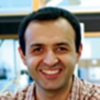 Dr. Ashkan Golshani is an Associate Professor of Biology and the Director of the Systems Biology Group at Carleton University. His main area of research includes high throughput investigation of protein-protein interactions and genetic interactions in model organisms. He is currently a natural sciences member of the CIHR Advisory Board for the new open funding schemes. Protein Interaction Prediction Engine (PIPE) Project This talk will discuss PIPE, a multi-disciplinary project at Carleton which began in 2002, with the aim of predicting protein interactions. Using HPC, the latest version of PIPE (MP-PIPE) enabled the research group to perform the first ever complete scan of the entire Human protein interaction network in a massively parallel computational experiment. The implications for understanding human cell function will be significant. |
Robert Beiko
Faculty of Computer Science, Dalhousie University
New Generation of Bioinformatics Techniques. Ten years on, the human genome remains an important source of discoveries. But we are only beginning to appreciate the diversity of the microorganisms that live inside us, and their roles in health and disease. Taking stock of this “microbiome” requires DNA sequencing on an unprecedented scale, and demands a new generation of bioinformatics techniques to make sense of the data.
And contributed talks from
Cristina Baciu, The Hospital for Sick Children, Toronto
Bioinformatics Analysis to Uncover Predisposition to Pediatric Medulloblastoma
Carol Gauthier, Compute Canada, Université de Sherbrooke
Genetics and Genomics Analysis Platform (GenAP)
Computational Materials Science
Plenary Speaker Nikolas ProvatasDepartment of Physics, McGill University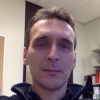 Nikolas Provatas is a Professor of Physics at McGill University and holds a Canada Research Chair in Computational Materials Science. His research is at the interface of condensed matter physics and materials engineering. It uses high-performance computing, principles of non-equilibrium thermodynamics and experiments to understand the fundamental origins of length scale selection in microstructure evolution in engineering materials and materials processes. These include systems undergoing crystallization from a melt or amorphous phases, particle precipitation, second phase formation, grain growth kinetics and reaction-diffusion processes in heterogeneous materials. Computational Modeling as a Predictive Tool for the Development of Advanced Engineering Materials Advances in high performance computing and Big Data science are now making it more realistic to think about designing materials from the atomic scale up by manipulating the non-equilibrium processes that control the evolution of their microstructure. This talk will review the success that approaches such as phase-field, phase-field-crystal, DFT and molecular dynamics modeling have had, and illustrate advances that have been enabled by high performance computing and their potential for industrially relevant applications in advanced materials. |
Richard Bowles
University of Saskatchewan
The Thermodynamics and Dynamics of Confined Hard Sphere Systems. Colloidal particles confined within narrow, quasi-one-dimensional channels are found in a wide array of biological and engineering systems that include the passage of proteins through cellular microtubules and the filling of carbon nanotubes with fullerenes. We use molecular dynamics simulations of hard spheres confined within a hard cylinder to study the thermodynamics and dynamics of these types of systems. When the density of the system is low, the fluid is isotropic, but at high densities, the particles pack into complex helical structures that vary with the diameter of the channel. For wide channel diameters, the transition between the fluid and helical crystal occurs through a first order phase transition, but as the channel narrows, the transformation occurs continuously as a function of density. We also find that topological defects in the helical structure play an important role in the particle dynamics of these fluids.
Hong Guo
Department of Physics, McGill University
Device simulation from atomistic first principles. Significant progress has been achieved in fabrication of nanostructures where quantum transport of charge/spin is closely coupled to atomic details of the device material. A serious challenge to device physics is to develop high performance computational tools for quantitative and material specific prediction of nonequilibrium quantum transport. Dr. Guo will explain nanoelectronic device simulation from the point of view of atomic first principles. Then, using the newly discovered monolayer two-dimensional transition metal dichalcogenides (TMDC) as an example, he will report a set of new device phenomena that are related to electric control of spin, quantum transport mediated by the spin-valley degrees of freedom, and the notion of valleytronics. He shall conclude by summarizing his efforts, the status and challenges in developing the atomistic technology computer aided design (A-TCAD) tools for emerging nanoelectronics.
Martin Plumer
Department of Physics and Physical Oceanography, Memorial University
Modeling New Paradigms in Magnetic Recording. Modeling the magnetic processes involved at both the nanometer and atomic scale can provide valuable guidance towards the evaluation and optimization of new paradigms under consideration in the magnetic recording industry. A brief overview of recent progress and challenges in the simulation of thermally assisted magnetization reversal in recording media will be reviewed.
Ivan Saika-Voivod
Department of Physics and Physical Oceanography, Memorial University
Some Liquids Freeze When You Heat Them. Normally a liquid freezes when you cool it. However, there are a handful of liquids that do the opposite and crystallize when you heat them. Dr. Saika-Voivod’s group studies a model, formulated originally to understand the anomalous properties of liquid water, and find that it exhibits just this behavior at particular pressures.
Robert Wickham
Department of Physics, University of Guelph
Characterizing the structure and dynamics of the disordered micelle regime in diblock copolymer melts through simulation. Dr. Wickham’s group uses large-scale, fluctuating, dynamical field-theoretic simulations to characterize the fluid-like structure and dynamics of disordered micelles, which are self-assembled, nanometer-scale macromolecular aggregates, and which are challenging to study analytically. Ultimately, the group aims to study nucleation of a micelle nano-crystal, and to explore the possibility of forming a “micelle glass”.
Josef W. Zwanziger
Department of Chemistry, Dalhousie University
Computational Design of Broad-band Zero Stress-Optic Glass. While most optical glass becomes birefringent when mechanical stress is applied, so-called Zero Stress-Optic (ZSO) glass self-cancels this property. Using high performance computing Dr. Zwanziger’s group has designed families of ZSO glass, which they have then successfully synthesized and tested in the lab. Dr. Zwanziger will explain how computational studies are advancing this area, including the very new subject of broad-band ZSO glass.
And contributed talks from
Laura Albrecht, Dalhousie University
Investigating Local Stability in Water Wires Using Atomic Energies
Sergey Kazachenko, Queen’s University
Algorithms for GPU based molecular dynamics simulations of coarse grained fluids: Applications to
liquid crystals
Seetha Pothapragada, Stony Brook University
Particle-Based Simulation of Platelet Activation in Blood Plasma on Supercomputers
Big Data and Analytics
Plenary Speaker Alexander KreininHead of Quantitative Research, STSM, Risk Analytics at IBM Canada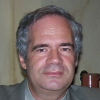 Alex has been with Algorithmics since 1995. After IBM acquisition in 2011, he became STSM and Head of Quantitative Research, Risk Analytics. Alex has PhD in Probability and Statistics from the University of Vilnius (Lithuania). He published over 60 papers and 2 monographs. His research areas include Market and Credit Risk Modelling, Numerical Methods for Risk Management, Monte Carlo Methods, Calibration of Stochastic Models, Semi-Analytical Methods of Portfolio Valuation, Design of Numerical Algorithms and their Software and Hardware Implementation. Dr. Kreinin is an Adjunct professor in the Computer Science Department of the University of Toronto and has been affiliated with the “Masters of Mathematical Finance” program. |
Oliver Baltzer
Co-Founder and CTO, Analyze Re
Big Data Analytics for Risk Engineering. Risk Engineering is the discipline of utilizing predictive analytics and real-time market data to design portfolios of risk that target specific economic goals while satisfying regulatory, market, and other constraints. Risk Engineering is employed by insurance and reinsurance companies as part of their strategic planning and execution. Analytical processes around Risk Engineering are data-driven and computationally intensive. Analyze Re provides Software-as-a-Service solutions for Risk Engineering to the insurance and reinsurance industry. This talk discusses our experience in building such platforms on the basis of commonly available Cloud technologies and what aspects from HPC we have been able to leverage.
Khuzaima Daudjee
University of Waterloo
An Evaluation of Pregel-like Graph Processing Systems. The introduction of Google’s Pregel for large-scale graph data processing has led to the recent development of Pregel-like systems such as Apache Giraph and GraphLab. Dr. Daudjee will present a performance study of these systems that compares them experimentally by considering graph and algorithm agnostic optimizations on up to 128 Amazon EC2 machines, identifying areas of improvement for all systems.
Dominic Lam
Visiting Scientist, Princess Margaret Cancer Centre
Social Sciences & Humanities Research Computing . The Big Data digital revolution offers parallels to the Industrial Revolution of the 19th century. Both extend our efficiency; one of our body and one of our brain. Today’s Big Data Analytics is breaking that parallels that it starts originate interaction with the human mind. Arguably, social and human activities form the most complex emergent phenomena and research in that domain will benefit tremendously from leveraging Big Data Analytics. This presentation will describe a set of Big Data Analytics projects in Social Sciences & Humanities research in Canada and will lead to a discussion on how the HPC support community can help enhance and expand these research activities.
Stan Matwin
Dalhousie University
Big Data Access – the Burning Issues. We are all familiar with exciting examples of fruitful Big Data applications using mobile or web usage data. And yet most of them are done using highly proprietary data and raise the issue of data access. In this presentation I will discuss some of the challenges of Big Data research, and their possible solutions. I will look first at some highly speculative ideas in big data governance. I will then focus on some of the existing cutting edge work in the Privacy-enhancing Techniques (PET), as tools that could potentially help to offer Big Data access solutions.
Oil and Gas Reservoir Modelling
Plenary Speaker K. SampathR&D Manager, Hibernia Management & Development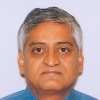 Dr. Sampath’s interests include Arctic Engineering, Safety & Environment and reservoir performance. Prior to his current assignment, he was Reservoir Manager at ExxonMobil’s Upstream Research Company in Houston, Texas. Dr. Sampath has experience in reservoir engineering, reservoir simulation and reservoir management. Enabling Improved Oil and Gas Exploration and Exploitation through Advances in HPC |
And contributed talks from
David Dubé, École Polytechnique de Montréal
An efficient parallelization of the radioactive particle tracking technique on graphic processing unit
Hui Liu, University of Calgary
Development of General Purpose Parallel Platform on IBM Bluegene/Q
Anup Radhakrishnan and Erkan Cakir, Memorial University
High Performance Cluster Computing for Fluid-Structural Analysis of an Experimental Rig to Test Submerged Flexible Ocean Structures
Data Caves and their Applications
Christoph W. Sensen
Visual Genomics Centre, Department of Biochemistry and Molecular Biology, Faculty of Medicine, University of Calgary
Using a Virtual Reality System to Study Diseases and Developmental Patterns. The modeling of complex genetic disease progress and developmental patterns requires the integration of a large number of –omics data types. Most of the data produced, from complete or partial genomes over Proteomics to Metabolomics data, thus are only analyzed in isolation by specialists in the respective field. Their integration requires the development of Ontologies and visual models, which allow the creation of unified models. Using the CAVEman system as an example, we will demonstrate the use of a virtual reality system to study diseases and developmental patterns.
And contributed talks from
John Charles, Halifax Regional Municipality
Utilizing Data Cave Technology for Municipal Infrastructure Planning
Glen Hougan, NSCAD University
Data Cave to Word Cloud: visualizing new experiences
Mohamed Mediouni, Université de Sherbrooke
Orthopedic simulation in the CAVE: femoral diaphyseal fracture
Luke Murphy, Saint Mary’s University
Visualization of the Active Site of the Ethylene-Forming Enzyme using a Data Cave
Infrastructure and Technology
Technology Keynote Speaker Paul CrumleyIBM Research, T.J. Watson Research Center Paul Crumley, IBM Research, T.J. Watson Research Center, is a Senior Technical Staff member. This title is given to IBM scientists and engineers who lead innovation and serve as a bridge between the R&D and customer worlds. After creating ways to scale IBM’s Blue Gene technology, Paul is now involved in bring the lessons learned in HPC to cloud. Prior to joining IBM, Paul was the Assistant Director at Carnegie Mellon University, Information Technology Center, where he lead the vision for the department’s R&D work. With his background in business and research communities, Paul is in a unique position to share lessons from distributed computing and HPC to leading edge big-data and analytics projects such as IBM Watson. Techniques for HPC and Large Cloud Environments. Social interactions, Big Data, Analytics and the Internet of Things are pressing at the boundaries of our current computing infrastructure and technology. Mr. Crumley will review a number of capability systems which he has helped create, decommission or operate over more than two decades. The goal is to understand some unique features of these systems to help us consider what lessons and techniques we should bring forward to new HPC systems or large cloud environments as these platforms are the vehicles by which we will computationally explore new realms such as pharmacology, weather and energy management. |
Technology Keynote Speaker Dean KoesterVP Sales, Data Direct Networks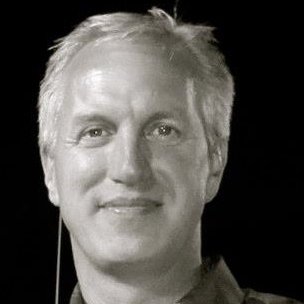 Unlocking the Commercial HPC Code. From a scientific and industrial focus, HPC is now moving to commercial organizations, presenting new challenges, and requiring a different approach for data management. In this presentation, DDN will discuss how cache-centric storage technologies can help resolve IO bottlenecks, while maintaining scale, performance, management and reducing TCO. |
Steve Tuecke
Deputy Director, Computation Institute, University of Chicago
Campus Data Service using Globus. Globus provides software-as-a-service (SaaS) for research data management, including data movement, storage, sharing and publication. This talk will describe how to build a secure, scalable campus data service that delivers advanced data management capabilities to researchers while significantly reducing the development, integration, and operations burden on resource providers. Using Globus as an exemplar, we will illustrate why the user experience is critical to making these capabilities accessible to a broad range of users at national research and education institutions, leveraging intuitive web interfaces and hiding access complexities behind a sophisticated federated identity infrastructure.
Gregor von Laszewski
Assistant Director of CGL and DSC, Indiana University Pervasive Technology Institute
Lessons Learned from Cloud usage in FutureGrid. FutureGrid is a project to develop a high performance grid testbed that allows scientists to collaboratively develop and test innovative approaches to parallel, grid, and cloud computing. In this talk we will provide an overview of FutureGrid, identify some of the lessons that we learned, and summarize some of its main features. These include that (a) users can deploy their own software defined systems on resources within FutureGrid not only virtual machines, but also bare-metal with our Rain provisioning framework, (b) an advanced framework to manage user and project affiliation and propagate this information to a variety of subsystems constituting the FutureGrid service infrastructure, (c) access to a variety of IaaS services, (d) a metric system that allows us to create usage reports from our entire IaaS frameworks, (e) repeatable experiments can be created with a number of tools including Pegasus, Precip and Cloudmesh, and (f) Cloudmesh, a system to manage virtual machines in a federated view of multiple cloud environments.
Peter Bojanic
VP Software Development, Xyratex, a Seagate Company
From Spinning Disks, to HPC to Cloud – A Seagate Perspective. As HPC work-load rapidly extends beyond on-site computing to Cloud connected global scientific communities, this presentation provides key insights into latest storage developments, from technologies critical to the next 10x capacity increase, to high availability scale-out HPC storage, to open source Cloud initiatives driving the need for cost-effective compatibility strategies.
Bernard Cobb
Portfolio Lead, Modular Data Centers, HP Critical Facilities
Data Center Strategy and a New Alternative to Minimize your Capital Investment. A successful data center strategy aligns with your C-Suite Executive priorities and aligns your data center facility with the ever changing needs of IT The more capital tied up in your data center, the less capital available to invest in your business.
Scott Henwood
Lead Software Architect, CANARIE Inc
This Changes Everything: Accelerating Scientific Discovery Through High Performance Digital Infrastructure The needs of the scientific research community sit at the intersection of advanced technologies, big data, and global networks of collaboration. CANARIE’s Research Software program leverages national high performance digital infrastructure to facilitate the creation of software tools and services that equip researchers to maximize the potential of data to accelerate scientific research. The creation of a toolkit of reusable software services also reduces duplication in software development, and enables more research dollars to be focussed on research.
In this session, Scott Henwood will explain how CANARIE is changing the paradigm for research software development. The presentation will illustrate how this innovative model, based on the power of collaboration to maximize investments in resources, is resulting in the efficient development of new platforms that accelerate time to discovery. Recent ground-breaking and cross-discipline software services developed through this program will be showcased, highlighting the benefits of this collaborative initiative for the scientific community.
Todd Price
Associate Director of Product Management, Data Centre and Cloud Solutions, Bell Aliant
From Colocation to the Cloud – Why Hosting is more Strategic than you think. A strategic overview on the importance of Colocation in your Data Centre and Cloud evolution. Colocation has become a critical stepping point as customers evolve from an in house data room/data centre solution to an integrated, multifaceted hybrid cloud. Understanding the technology and key business decisions can help Universities and Enterprises move towards an optimal colocation and cloud solution. This presentation will touch on the business implications of key trends we are seeing in the Data Centre market place in 2014 and the recommended approaches for optimizing your data centre road map.
Thomas Armstrong
Solutions Architect, Fusion-io
Flash Memory in Big Data. Mr. Armstrong will discuss how flash can be leveraged to unleash maximum performance in Big Data processing workloads.
Vito Bongiorno
Manager, North America Pre-Sales, Cray, Inc.
Cray Solutions for Higher Education and Research. Cray has always been known for its high-end, high-performance, compute systems. It has a strong presence at the top national academic computation centers in the world. This talk will highlight some of the pioneering science done on these systems. The focus of the talk, however, will be on some of the less known products Cray brings to the academic research. This includes a standard cluster offering (the result of the Appro acquisition over a year ago) that combines high quality standard components with the software and services Cray is known for; and a full range of storage products, including a Cray-design Lustre appliance and a Hadoop product. The talk will cover Cray’s end-to-end solutions that are optimized for both compute and data intensive workloads.
Mike Bloom
Corporate Advisory Engineer (Canada), Mid-Tier Storage Division, EMC
Building Predictability in HPC Solutions. High Performance Computing struggles with the requirement of being able to provide predictable performance while being able to be deployed by individuals whose primary competency is usually analytics or another formal discipline. This session focuses on the problem of scaling, agility, and interoperability between applications that reside on different protocols in a high performance and data analytics context.
Marcel Bourque
Oracle Principal Sales Consultant, Oracle
Oracle innovations that cross the barriers between HPC and Enterprise computing. This session will look at Oracle innovations that cross the barriers between HPC and Enterprise computing, such as Infiniband in the enterprise, task specific systems, and high-performance, high-capacity, scalable storage.
Terry Dalton
Chair, ACORN-NS
Strengthening Nova Scotia’s Digital Infrastructure. ACORN-NS is the Nova Scotia Regional Advanced Network responsible for advanced network infrastructure development, operation and services throughout Nova Scotia for the research, education, health, and innovation communities, promoting the growth of a knowledge-based economy and society in Nova Scotia. Terry Dalton, Executive Director and Chair ACORN-NS, will give an overview of active projects and initiatives strengthening the advancement of digital infrastructure throughout Nova Scotia.
Roger Delisle
Manager, Research Partnerships Programs, NSERC
NSERC Partnership Grants – Supporting Research Collaborations between Industry and Universities. The Natural Sciences and Engineering Research Council (NSERC) empowers successful R&D partnerships between industry and post-secondary institutions. A brief overview of granting opportunities funding the whole spectrum of R&D activities, from short-term practical design solutions to 5-year strategic endeavours, will be presented along with examples of successful outcomes.
Don Etienne
Arista Networks
Next Generation Data Centre Network: SDN. Arista Software Driven Cloud Networking (SDCN), combines the principles that have made cloud computing the unstoppable force that it is: automation, self service provisioning, and linear scaling of both performance and economics, coupled with the recent trend in Software Driven Cloud Networking that delivers: network virtualization, custom programmability, simplified architectures, and more realistic price points to the table. This combination creates a best-in-class software foundation for maximizing the value of the network to both the enterprise and service provider data center; a new architecture for the most mission-critical location within the IT infrastructure that simplifies management and provisioning, speeds up service delivery, lowers costs and creates opportunities for competitive differentiation, while putting control and visibility back in the hands of the network and systems administrators.
Nick Ihli
Adaptive Computing
Speeding the Time to Discover with More Efficient Workflows – What’s New in Moab HPC Suite. Moab HPC Suite is trusted by the world’s largest HPC and Cloud environments. Come learn about the latest innovations in Moab HPC Suite that unifies data center resources, optimizes the analysis process and guarantees services to the business. These new features include Green Policy Configuration and Operation, Job Energy Usage Accounting, Data Staging Refactoring, Grid Operation Validation, High Throughput Computing and other market demanded capabilities to help your organization extract the insights necessary to make game-changing, data-driven decision to ensure a competitive advantage.
William Moore
Senior Account Executive, Net Direct Inc.
Commercial off-the-shelf (COTS) Servers + Original Design Manufactures (ODM) + Open Source Software = Cost Effective HPC. This session will focus on Net Direct’s experience with delivering and supporting, powerful, agile, industry standard COTS based HPC solutions.
Florent Parent, Lixin Liu, and John Sherwood
Calcul Québec, Westgrid and ACORN-NS
perfSonar as a National Network Monitoring Platform. Achieving high performance data transfers over high speed wide area networks is challenging. Proper software for data transfer must be available to researchers, network stacks need to be properly tuned, and networks must be monitored to find and solve potential bottlenecks. This talk will focus on network monitoring using perfSonar. We will present the coordinated efforts from Compute Canada, Canarie and ORANs to deploy perfSonar measurement infrastructure across Canada. We will also describe some real network problems that have been detected by perfSonar.
Lori McMullen
Executive Director, Canadian University Council of Chief Information Officers (CUCCIO)
Digital Leadership Infrastructure Council (DILC): Panel Discussion. This session will provide an update from the DILC and the key outcomes of the National Digital Infrastructure Summit held in January 2014. A brief presentation summarizing various topics including: the challenges of the present digital infrastructure (DI) ecosystem, the implications of the proposed changes to tri-council policies for researchers and institutions and the preliminary results of recent pilot projects.
Compute Canada Town Hall
An informal meeting for Compute Canada’s researchers and extended user community to discuss emerging issues on advanced research computing including the CFI cyberinfrastructure initiative and Compute Canada’s Sustainable Planning for Advanced Research Computing (SPARC). President and CEO, Mark Dietrich and Chief Scientific Officer, Dugan O’Neil will seek feedback on Compute Canada’s services and how they can be improved to enable your research. As the national platform for advanced research computing in Canada, Compute Canada senior leaders need to ensure its investments and services include both specific and common requirements for its researchers. This is your opportunity to have an impact on future planning and voice your thoughts on all things Compute Canada.
And contributed talks from
Bill Appelbe, ORION
Advanced Computing Needs and Opportunities – the ACTION Project
Mark Leggott, University of Prince Edward Island
Building a Research Data Management System with Islandora
Cristian Suteanu, Saint Mary’s University
Symmetry and scaling properties in natural time series – new tools for the detection and characterization of pattern change
Posters
First prize winner
- Carl P. Romao (co-authors Josef W. Zwanziger, Mary Anne White), Finite Element Analysis of Thermal Stress in Thermomiotic Materials
Second prize winner
- Maan H. Hani (co-author Rob Thacker), Explaining the Low Luminosity Tail of the AGN Luminosity Distribution
Third prize winner
- Rehan Siddiqui (co-authors Brendan Quine,Caroline Roberts,Naif Al Salem,Catherine Tsouvaltsidis,Rajinder Jagpal), Efficient Detection of Cloud Scens from Spectral Data of Space-Orbiting Argus1000 Micro-Spectrometer
Other presented posters
- Alejandro Allievi, Reducing Java I/O Bottlenecks Using MPI (FastMPJ) in Computational Fluid Dynamics Applications
- Dijana Anzelj (co-author Cory C. Pye), Ab nitio Investigation of Pb (II) Complexes as Possible Corrosion Products in a SCWR
- Victoria Berryman (co-author Russell J. Boyd), A Computational Investigation of Nitric Oxide Induced Oxidation of Oxyhemoglobin
- Stephen Driscoll (co-authors Jean Burnell, Russell Boyd), A Computational Study of Cyclohexyne: the Search for Regioselective Cyclic-Alkyne Cyclization Reactions
- Nathaniel Egan-Pimblett, Using the GEOS-Chem Adjoint Model to Understand Black Carbon Aerosol Emissions
- Lanli Guo (co-author Jinyu Sheng), Numerical Simulation of Ocean Waves over the North Atlantic Ocean using WAVEWATCH III with Climate Forecast System Reanalysis
- Xiang Jiang (co-author Daniel L. Silver), Using Vector Space Model of Semantics to Reduce Dimensionality of Text Data
- Vasily Korabel (co-author Keith Thompson), The Assimilation fo Sea Level and Sea Surface Temperature into a ¼ degree North Atlnatic Model – Using Multivariate Ensenble Optimal Interpolation: The Importance of Tailoring the Ensemble
- Ian Lumb (co-author Jim Freemantle), Towards Earthquake-Tsunami Causality via Data Science: Giraph-Derived Credibility Scores for Data from Twitter
- Sedigheh Mahdavi, (Co-Authors L.A. James, T.E. Johansen), A General Review: Role of High Speed Computation in Oil and Gas Reservoir Simulation
- Charles Marcotte Girard (co-author Alain Rochefort), Electronic Properties of CIGS Nanowires: a Theoretical Perspective
- Reza Nakhjavani (co-authors Sahel Sharify, Ali B. Hashemi, Alan W. Lu, Cristiana Amza, Stephen Strother), Porting a Neuro-Imaging Application to a CPU-GPU cluster
- Kyoko Ohashi (co-author Jinyu Sheng), Numerical study of the effect of the physical environment on the movement of the American Eel in the Gulf of St. Lawrence
- Shiliang Shan (co-author Jinyu Sheng), Examination of Circulation and Particle Movement in a Submarine Canyon: Sable Gully, Using a High-resolution Ocean Circulation Model
- Tarek Sherif (co-authors Nicolas Kassis, Marc-Étienne Rousseau, Reza Adalat, Alan Evans), BrainBrowser: Distributed, Web-based Neurological Data Visualization
- Ian Short (co-author Eamonn Campbell), Modelling the Spectra of Red Giant Stars
- Oliver Stueker (co-authors Sharene Bungay, Jason Pearson, Raymond Poirier, Peter Warburton), Retrievium – A Semantic Repository for Quantum-Mechanical structures
- Jorge R. Urrego-Blanco (co-author Jinyu Sheng), Study of Sea Ice Dynamics in the Gulf of St. Lawrence Using a Coupled Ocean-ice Model
- Monica Wachowicz (co-authors Maria Dolores Arteaga Revert, Rui Sun, and Yves Bourgeois), From 140 Characters to 140 Terabytes of Creative Ideas
- Kai E. O. Ylijoki (co-authors Zachary E. Konway, Nicole Laidlaw, Shifat Sharmin, Stephanie Boudreau, Peter H. M. Budzelaar, Jeffrey M. Stryker, E. Peter Kündig), Computational Modeling as a Predictive Tool in Synthetic Chemistry
- Mitchell Young (co-author Dr. C. Ian Short), 1.5-D Red Giant Stars in NLTE
- Heng Zhang (co-author Jinyu Sheng), Numerical Study of Extreme Sea Levels Due to Storm Surges and Tides over the Northwest Pacific